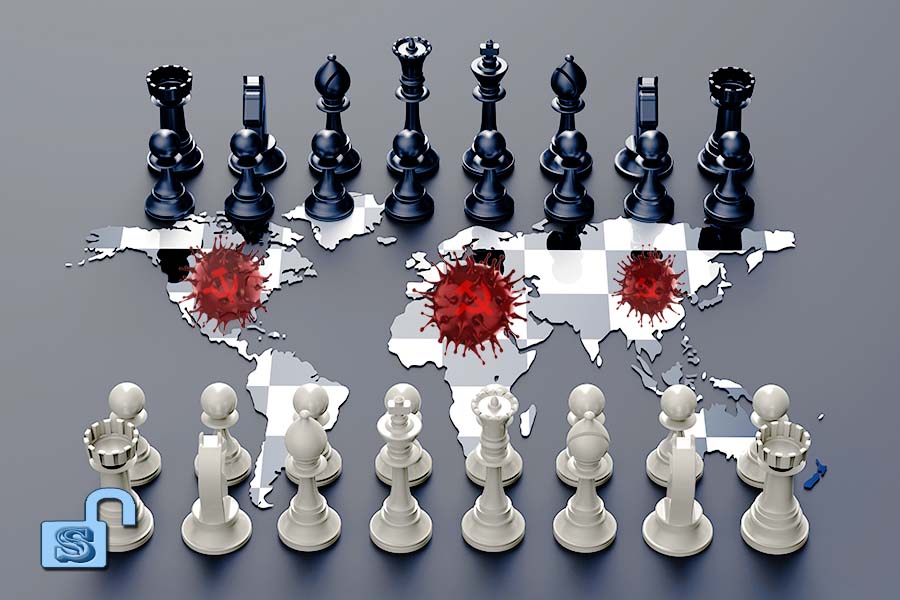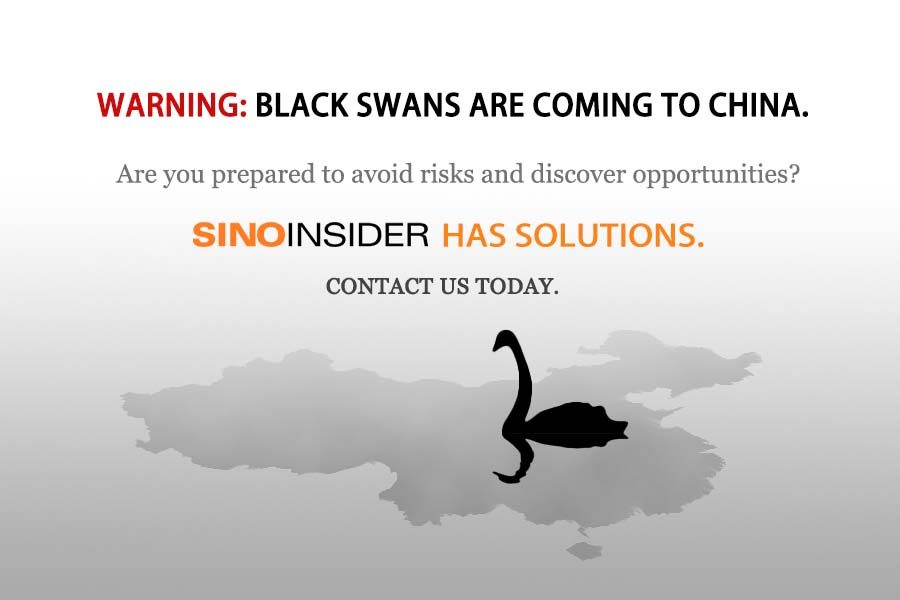◎ The storm of negative sentiment towards China reflects a trend of shrinking tolerance for the CCP around the world.
Negative attitudes towards the People’s Republic of China (PRC) are on the rise. According to an October 2020 Pew Research Center survey, popular opinion on the PRC in advanced economies had reached the worst point “since the Center began polling on this topic more than a decade ago.”
The storm of negative sentiment reflects a trend of shrinking tolerance for the Chinese Communist Party (CCP) around the world. Foreign governments are confronting Beijing on issues ranging from trade and tech to territorial disputes, human rights, and ideology. This “new cold war” has sharply raised geopolitical risks for China, which could prove fatal for the CCP regime.
The Sino-U.S. trade war that began in 2018 is a key factor for the shift in global attitudes towards China. More recently, the CCP’s coverup and manipulation of the novel coronavirus pandemic to serve its propaganda aims has become the catalyst for a sea change in perceptions about China across the board. Countries and businesses also find themselves having to react to U.S. policies against China.
Trade is an area where pressures on China and blowback from the CCP’s coronavirus coverup are most visible. Since 2018, the United States has tariffed about $300 billion worth of Chinese goods. The tariffs and the pandemic exposed the risks of China-dependent supply chains, prompting many foreign firms to shift operations elsewhere. Big-name companies like Apple, Samsung, Daimler, Hasbro, Nintendo, and GoPro have already pulled supply chains or subsidiaries from China. The impact of global trade pressure is reflected in Beijing’s published figures. China’s GDP fell 0.19 percent to 6.75 percent in 2018 and 0.64 percent to 6.11 in 2019. This May, premier Li Keqiang declined to set a GDP growth target for 2020, ostensibly due to the pandemic.
The CCP is aware of China’s trade vulnerabilities and has tried to push for global hegemony through technological catch-up—a strategy that has also elicited strong U.S. counters. The Trump administration has imposed crippling bans on Chinese telecommunications makers Huawei and ZTE and warned other countries about the national security risks of using PRC-built equipment.
The ban of sale of U.S. equipment and software to Huawei has axed the company’s competitive advantages, due to its heavy reliance on American components. A Nikkei Asia teardown of a Huawei 5G base station unit found less than 10 percent of its parts originating in China. Today, many countries, including Singapore, have opted to go for Ericsson and Nokia instead of Huawei for their 5G equipment, a decision that is almost certainly the result of U.S. action.
Beijing’s tech woes are not limited to 5G. SMIC, China’s largest semiconductor manufacturer, was recently blacklisted by the U.S. government. The United States is also in the process of putting restrictions on TikTok and WeChat, two popular Chinese social media platforms that see widespread use in America. In Asia, India blocked over 100 Chinese apps from its domestic market, including TikTok and WeChat, after the CCP provoked border skirmishes at the Sino-Indian border around the middle of the year.
Indeed, the CCP’s heightened belligerence towards its neighbors, as well as its continued militarization of the South China Sea, have helped align countries in the Indo-Pacific region with the United States. In Tokyo, Secretary of State Mike Pompeo spoke about the CCP threat and the need to institutionalize the Quad, an informal security alliance between Japan, Australia, and India, and the United States. Pompeo’s remarks suggest that the Quad could serve as the basis for both a Washington-led anti-CCP military alliance as well as an economic network. Beijing has already recognized the Quad’s potential—PRC foreign minister Wang Yi called it the “Indo-Pacific NATO” during his October visit to Malaysia.
The PRC is also under pressure from Taiwan’s growing international profile. In recent years, Beijing has been creeping its way towards a “peaceful reunification” of Taiwan and the mainland by wooing away its allies, carrying out influence campaigns to get countries and businesses to recognize Taiwan as belonging to the PRC, and subverting Taiwanese politics and media to urge acceptance of “reunification.”
The CCP’s efforts have drawn pushback from the United States and a growing number of countries. In August and September, prominent U.S. officials visited the Republic of China (ROC), as Taiwan is officially known, contrasting the democracy favorably with the communist mainland and floating bilateral agreements. The U.S. ambassador to the United Nations also recently pushed for Taiwan’s inclusion in the international body. Meanwhile, Czech Senate speaker Milos Vystrcil channeled the late U.S. President John F. Kennedy by declaring, “I am a Taiwanese” when addressing Taiwan’s parliament in August. And in response to “instructions” by the PRC’s embassy in New Delhi to Indian media not to refer to Taiwan as a “country” ahead of its national day, an Indian politician instead put up a hundred signs featuring the ROC flag and the words “Taiwan Happy National Day October 10” outside the PRC embassy.
More countries are now inclined to condemn the CCP over its human rights abuses and even broach once “taboo” topics. On Sept. 30, the House Republicans’ China Task Force issued a report on China with over 400 recommendations. The first recommendation in its executive summary called for evaluating whether “the CCP’s crimes against Uyghurs amount to genocide,” more sanctions over the erosion of Hong Kong’s autonomy, and specific actions in response to the CCP’s religious freedom violations and forced organ harvesting. On Oct. 6, 39 countries led by German ambassador Christoph Heusgen issued a statement expressing “grave concerns” about the “human rights situation in Xinjiang and the recent developments in Hong Kong.”
Finally, the CCP is under pressure from immigration bans. In July, several news outlets reported that the Trump administration was considering a sweeping travel ban for CCP members and their immediate family, with the purpose of “delegitimizing” the Party and its members. The White House has denied visas to a very small portion of Chinese military-linked personnel who applied for immigration documents “under false pretenses or even false identities.”
On Oct. 2, the U.S. issued policy guidance banning the immigration of Communist Party members to the United States. On Oct. 5 a report by the Yomiuri Shimbun announced Japan would tighten its visa inspection process starting April 2021, especially for Chinese researchers and students, over concerns of espionage and foreign interference. Other countries could take similar steps to close off immigration loopholes that imperil national security.
The array of international pressures bearing down on China compounds the Communist Party’s domestic challenges, with its external woes leaving it fewer options to smooth over social unrest or economic malaise. The tightening atmosphere calls into question the political legitimacy of both the CCP and its General Secretary Xi Jinping, who faces growing resentment from within the regime.
Meanwhile, the Party’s propaganda apparatus soldiers on, successfully reeling in foreign investments and capital with such narratives as China’s victory over COVID-19, economic “recovery,” and “liberalizing” Chinese financial market. The CCP, however, will find itself hard-pressed to fulfill its commitment of favorable returns as China’s economy continues its slowdown, and as the Party’s “dual circulation” policy moves the country toward partial autarky.













